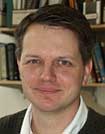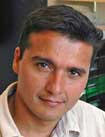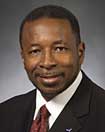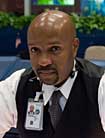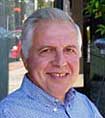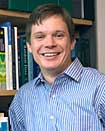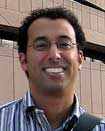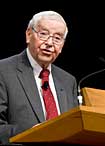
APRIL 2010In this issue:
|
||
|
1. Covert to receive AIAA highest awardThe American Institute for Aeronautics and Astronautics has announced that AeroAstro Professor Emeritus Eugene Covert will receive its highest honor for achievement in aeronautical science and engineering — the Reed Aeronautics Award. The organization cites Covert for “lifelong contributions to aeronautics teaching; research through advancements in state-of-the-art wind tunnel testing at subsonic, supersonic, and hypersonic speeds; and public service.” Covert’s aeronautics career began in 1946 at the Naval Air Modification Unit’s Pilotless Aircraft Division where he worked on projects leading to the Sparrow missile. In the 1950s, he conducted tests on numerous aircraft types, including the famed F-4 Phantom, in the MIT Naval Supersonic Wind Tunnel. From 1972-73, Covert was chief scientist of the U.S. Air Force, and from 1978-79 he was technical director of the European Office of Aerospace Research and Development. Later, he was a NASA consultant on the Space Shuttle main engine, and was a member of the commission that examined the Challenger accident.
Covert was appointed to the MIT faculty in 1963. He was head of the Department of Aeronautics and Astronautics from 1985 until 1990. |
|
|
2. Darmofal, Lozano promotedIn recognition of his international leadership in the field of aerospace computational fluid dynamics and his exceptional educational and service contributions, Professor and associate department head David Darmofal has been promoted to full professor.
Professor Paulo Lozano has also been promoted, to the position of associate professor without tenure, in recognition of his strong and growing contributions to space propulsion. Congratulations to both on this well-deserved recognition. |
|
3. Flyfire could float images in 3D spaceImagine pixels free-floating in the air, creating digital images in 3-D space. This is the Flyfire concept, a project of MIT's SENSEable City Lab and Aerostro's Aerospace Robotics and Embedded Systems (ARES) Laboratory. Flyfire would employ a large number of remotely controlled, self-organizing LED-equipped micro helicopters, each acting as a pixel in an overall image. Through controlled movements, the helicopters would perform elaborate choreographies, generating displays in three-dimensional space. ARES Lab director Professor Emilio Frazzoli says, "While today people can simultaneously control a small number of micro helicopters, Flyfire aims to control very large numbers." A Flyfire concept video posted on YouTube has been viewed nearly 300,000 times at this writing.
Simulation of how a Mona Lisa image could be created in 3-D space by LED-equipped microcopters. |
||
4. Open house for AthleteProfessor Brian Williams' Model-based Embedded and Robotic Systems group teamed with JPL autonomy researchers and roboticists for a March open house at JPL to demonstrate autonomous control and human/robot coordination with the Athlete (All-Terrain Hex-Limbed Extra-Terrestrial Explorer) Lunar Rover. Williams says, "We ran a two day open house in the JPL Mars Yard, during which students demonstrated Athlete's operation and presented various programming methods. JPL participation was exceptional; there were more than 100 JPL engineers from a broad set of sections, including software, robotics, autonomous systems, systems engineering, and controls."
|
||
|
5. Alums in NASA newsTwo Course 16 alums are in the news at NASA. Woodrow Whitlow Jr. was named by NASA Administrator Charles Bolden as associate administrator for mission support at NASA headquarters in Washington. Whitlow, who joined NASA in 1979 as a research scientist at Langley, received his undergraduate (SB '74) and graduate (SM '75, PhD '79) degrees in AeroAstro.
Alum Kwatsi Alibaruho (SB '95), NASA's first African American flight director, was lead FD on STS-130, the most recent Shuttle mission, which launched in February. In a NASA video, Alibaruho talks about his position and how he got there. |
|
|
6. News briefsThe European Space Agency has invited Professor Jeff Hoffman to serve on its Human Spaceflight and Exploration Science Advisory Committee. In offering the appointment, ESA director general Jean-Jacques Dordain cited Hoffman's "knowledge of ESA as well as the international reputation you so rightly enjoy." The committee is the senior advisory body to the Directors of Human Spaceflight and Science and Robotic Exploration on human spaceflight, microgravity, and exploration programs. Engineering Dean Subra Suresh has appointed AeroAstro Professor Amedeo Odoni as the Singapore Research Professor of Transportation Systems. In making the appointment, Suresh wrote, "This ... reflects your commitment to the mission and objectives of the SMART (Singapore-MIT Alliance for Research and Technology) research program and your excellent work on the Future Urban Mobility Interdisciplinary Research Group." The appointment runs until January 1, 2011. AeroAstro principal research engineer and Partnership for AiR Transportation Noise and Emissions Reduction associate director James Hileman has been named FAA Centers of Excellence Faculty of the Year. Hileman leads PARTNER's alternative fuel life-cycle assessments and aircraft metrics research, as well as the environmental impacts analysis work for two teams within the NASA N+2 and N+3 programs. In presenting the award to Hileman, AeroAstro head and PARTNER director Ian Waitz said, "Jim is an excellent colleague and a superb mentor to our students. Jim has been extremely effective in managing the complex PARTNER Program Office during a period when our research portfolio has been expanding. He is exhaustive in his attention to the diverse responsibilities of both management and research, and a wonderful person for all to work with." Through Women in Aviation International, Abhizna Butchibabu has been named recipient of the American Airlines/American Eagle Engineering Scholarship. Candidates for the $5,000 award are evaluated on academic standing, personal accomplishments, teamwork, leadership skills, and community service involvement. Butchibabu is an AeroAstro grad student working with MIT's International Center for Air Transportation. Doctoral candidate Stephanie Gil has received the General Chairs' Alum Danielle Wood, now a doctoral candidate in EECS, will receive a 2010 Carroll Wilson Award from the MIT Entrepreneurship Center. She will use the award to travel to South Africa where she will conduct a project called "Space Technology in South Africa: Understanding the Past and Contributing to the Future." The project includes producing a conference paper, analysis of potential strategies for South Africa’s space sector, and supporting the South African delegation at a UN Committee on the Peaceful Uses of Outer Space Affairs conference. Professor Youssef Marzouk will receive a U.S. Department of Energy grant under DoE's Early Career Research Program. Marzouk's project, “Predictive Modeling of Complex Physical Systems: New Tools for Uncertainty Quantification, Statistical Inference, and Experimental Design,” was one of 69 selected from among 1,750 applications, Retired AeroAstro Professor and former department head Jim Mar recently celebrated his 90th birthday at his home in Seattle. In recognition of the occasion, the department sent Mar several photos of him with students taken in the '70s when he led the department in its introduction of Unified Engineering. The photos were framed with a picture of MIT and a small plaque honoring Mar.
|
|
7. Committee exploring Shuttle artifact aquisitionLate last year, NASA announced it is partnering with the General Services Administration to consider transferring no longer needed Shuttle artifacts to educational institutions, museums, and other qualified organizations. An AeroAstro ad hoc committee is exploring aquisition of Shuttle items that could be used as teaching tools. Consideration is being given to not only how items could be used, but also where they could be housed, long-term need, and how associated costs such as disassembly, preparation, and shipping could be financed. MIT Museum science and technology curator Debbie Douglas notes that it is early in the program; currently there are very few items available and most appear to be of marginal value. However, more items will be surplused over time as NASA determines they are no longer needed. The AeroAstro Shuttle artifact committee includes Professors Jeff Hoffman, Dava Newman, Larry Young, and Dave Miller; Space Systems Lab associate director Alvar Saenz-Otero; doctoral candidate Phillip Cunio; communications director Bill Litant; and curator Douglas. |
||
|
8. Norman Ham, Aaron Cohen pass awayAeroAstro Professor Emeritus Norman D. Ham (SM ’52, AE ’57, ScD ‘68), an aeronautical engineer who was internationally recognized for his expertise in helicopter rotor design, died in Brookline, Mass. on Feb. 13 at age 80. Known to many as the “father of individual-blade-control,” Ham contributed extensively to the rotorcraft community. He joined the MIT AeroAstro faculty in 1962. At MIT, he founded and directed the VTOL Technology Laboratory, and conducted pioneering research on dynamic stall, stall flutter, individual blade control, and gust response for helicopter rotors. His skill as a lecturer at MIT was reflected in the warm and longstanding relationships he held with many of his former students up to the time of his death. Aaron Cohen, 79, former manager of the Apollo command and service module, Space Shuttle project manager, and Johnson Space Center director, passed away on Feb. 25 following a long illness. Cohen was a featured panelist in the department's "Giant Leaps" Apollo anniversary symposium last spring. |
|
9. AeroAstro group emailAeroAstro maintains a number of email lists, ranging from broad to specific. In general, if you're a member of the group to which you are emailing (e.g., you're a postdoc emailing aapostdocs@mit.edu), your email will be distributed without need for list administrator approval. If you're not a member of the group, your email will be held and an administrator (Phyllis Collymore or Bill Litant) will examine it first, primarily to ensure it's not spam. All emails sent to aadept and aall are held for administrative approval. Following are the AeroAstro email addresses:
Note: If the "To:" field in your email contains numerous other email addresses in addition to one of the above email addresses, Mailman holds your mail for administrative approval as this can be a spam indication. |
||
If you know of events, honors, activities, or other information you'd like to see in the next issue of AeroAstro enews, please send to wlitant@mit.edu — we'd be pleased to include your submissions. |
||
© 2010 MIT Department of Aeronautics and Astronautics. All rights reserved. |
||

